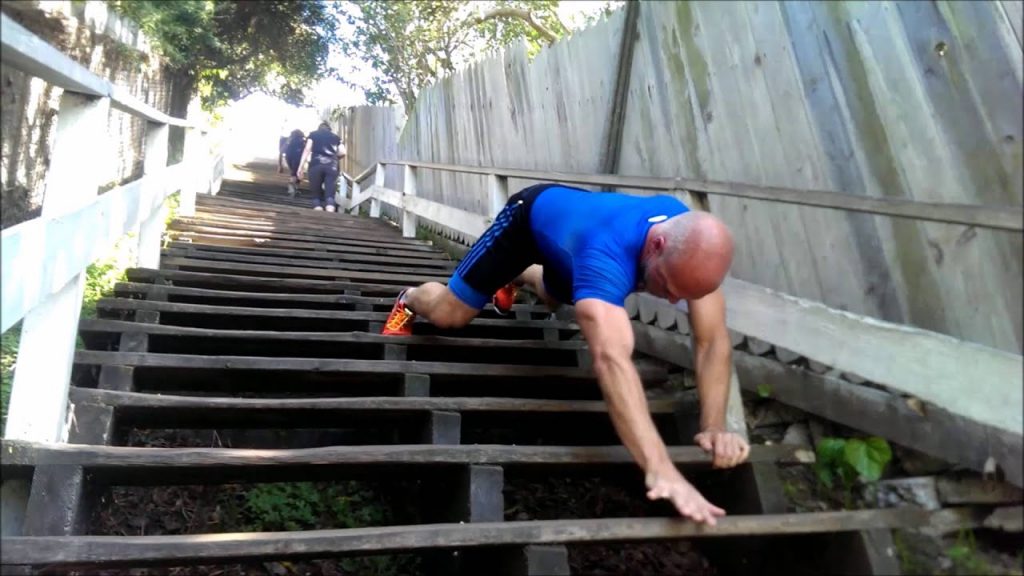
The best online fitness resource you'll ever need. We filter out the BS to ensure you meet your health and fitness goals!

The best online fitness resource you'll ever need. We filter out the BS to ensure you meet your health and fitness goals!

At home workouts, as the world is currently discovering, are hardly a holiday from intense training. Just because you aren’t hitting the gym, box, studio or track, it doesn’t mean you’re going light- if you do it right, training at home, with minimal equipment, can be every bit as challenging, beneficial and, above all else, stimulating, as training anywhere else.
Some at-home workouts will require you to have equipment. This is fair enough: if you want a good sweat, it’s reasonable to ask you to have a couple of dumbbells, maybe a kettlebell, maybe some bands. However, for some people, this is not a reality. Especially at the moment, as the world sits in lockdown amid the Covid-19 pandemic, some people are ill-equipped.
Just a few weeks ago, you were happily going to your gym, or wherever else, and didn’t need any gear at home. Suddenly, the world went dark- if you didn’t happen to grab some equipment before the shops shut, you may find yourself without anything other than your bodyweight and whatever you have around the house.
This is where stair workouts come into their own. Most of us have stairs. If not, most of us can get to a park or somewhere similar where there are steps, or at the very least steep enough inclines to make do.
Of course, stairs aren’t the only solution. Bodyweight movements, calisthenics, yoga, Pilates and good, old-fashioned jogging are always an option. But things get tiresome, especially when your daily routine revolves around sitting in the house, so let’s get some options together and make sure we have enough diverse training methods in our arsenals as possible.
There are some great benefits to bringing something as simple as a set of steps into your training routine.
Stair training is easy and available to most people. Including stairs in everyday life helps to keep your legs strong and your muscles defined. It keeps your circulation up, improving vascularity, improving heart health and aiding in flexibility and recovery. Just a few minutes going up and down stairs can help to stabilise blood sugar and insulin levels and can have an energising effect far better than a cup of coffee in the morning.
Stair climbing is also a cardiovascular challenge, whether you’re carrying heavy furniture, shopping, or just walking up unloaded: in daily life, it’s always best to take the stairs rather than the elevator.
However, simply walking up and down stairs is OK in our usual lives. Right now, and with workouts in mind, a more mindful, concerted effort is required. There are several ways you can use a simple staircase and minimal equipment (often everyday objects) to give yourself a fantastic aerobic and muscular workout.

Let’s start with the obvious ones: step ups and stair lunges. Whilst step ups start from simple walking, and don’t elaborate too much, you can really deepen the range of motion, stretch and stimulation by bringing them into full lunges.
For step ups:
For lunges:
To increase the resistance for step ups or lunges, try carrying some weight. A set of dumbbells would work well, but so would a full rucksack, or simply holding a couple of full water bottles or bags of sugar/flour.
It’s not just your legs that can benefit from stairs- they are also great for working into push ups without having to go through the full range of motion that performing them on the floor would require. They can be switched up to provide a range of intensities.
To perform a stair push up, simply:

Let’s get some full body, awkward conditioning going. Stair crawls hit your legs and core pretty hard, whilst also giving your upper body a decent workout through a variety of angles and planes of motion.
For stair crawls:
As an alternative to the stair crawl, you can try for a more advanced variation and go for some crab walks. These will hit your core a little harder and will require a greater degree of coordination but will ultimately achieve similar movement patterns to the regular crawl.
To perform crab walks:
Box jumps are one of the greatest ways to improve explosivity through your lower body, to elicit hypertrophy in your quads and glutes, and to improve overall athleticism and coordination. A lower, higher rep version can be performed as easily on stairs (or even on a low wall) as on specialised boxes at the gym; they represent a perfect addition to your at-home lower body workouts.
To perform stair box jumps:

You can either revolve your individual workouts entirely around your stairs and the exercises and variations listed above. Alternatively, they can form one part of your training session. Either program them as individual exercises in your list or use them to jump your heartrate upwards during a circuit or HIIT routine.
Strength training will plateau quite quickly using stair exercises. Though you can a degree of resistance, moving heavy weight up and down stairs is inadvisable, so resistance will usually largely depend on explosivity and bodyweight.
However, of course, explosivity and speed will both benefit from some of the exercises in this list, and the core variations will make sure your trunk and legs are strong and able to work well in concert.
Coordination and balance will both need to be quite good to begin with, simply to perform these exercises safely. To test both, try standing on one leg for 30 seconds without holding onto anything. To make it harder, try relying more on proprioception by closing your eyes. If you can do this confidently, you are likely ready and able to give stair workouts a go. If not, work up to it- hold off on getting on the stairs until you can stand still on one leg for 30 seconds, on both sides.
For each exercise, make sure you are steady on your feet and/or hands before initiating each rep.
It’s usually best to reserve stair exercises for intense training, like circuits, HIIT, or simply high-rep conditioning.
There we have it. If you’re struggling to know how to train at home- or if you simply want to add a little variation into your current program and work on coordination, balance and athleticism, stair workouts are perfect. Though they require a little awareness to stay safe, the rewards can be fantastic.